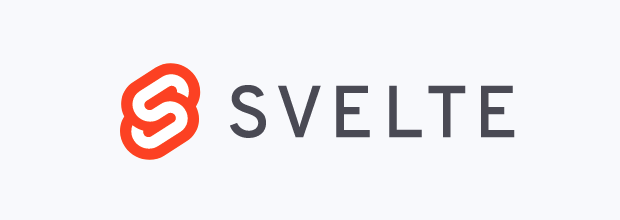React, the favored JavaScript library developed by Fb, has undoubtedly revolutionized the way in which internet apps are constructed by introducing a component-based structure and a digital DOM. Nonetheless, as internet improvement continues to evolve, builders usually search options to React that supply a extra light-weight and environment friendly method to create consumer interfaces. Whether or not it’s for sooner load occasions, higher efficiency on resource-constrained gadgets, or only a need for a less complicated improvement expertise, there are a number of options value exploring. On this article, we’ll delve into a few of the greatest light-weight options to React, together with a relative newcomer to the scene — htmx.
The Greatest Light-weight React Options
1. Preact
Preact is commonly considered one of many closest options to React. It’s a quick and light-weight library that maintains an identical API to React, making it a straightforward transition for builders acquainted with React’s syntax. Preact focuses on offering the core options needed for constructing consumer interfaces whereas minimizing its bundle measurement. Its small footprint is good for functions that prioritize pace and efficiency, making it probably the most widespread light-weight React options. Take a look at our information to utilizing Preact as a React different.
Key Options:
- Measurement: Preact is extremely light-weight, with a minified and gzipped measurement of round 3KB.
- Compatibility: Preact is appropriate with most React functions and libraries, making it simple to combine into present tasks.
- Efficiency: Because of its small measurement, Preact boasts quick load occasions and optimum runtime efficiency.
- Ecosystem: Whereas not as intensive as React’s, Preact has a rising ecosystem of plugins and extensions.
2. Inferno

Inferno takes a novel method to light-weight internet improvement by striving to be the quickest UI library accessible. It’s impressed by React and goals to offer an identical developer expertise whereas delivering distinctive efficiency. Inferno boasts a powerful digital DOM diffing algorithm that contributes to its distinctive rendering pace.
Key Options:
- Efficiency: Inferno’s extremely optimized diffing algorithm results in blazing-fast rendering, making it a wonderful selection for functions the place efficiency is paramount.
- Measurement: Whereas barely bigger than Preact, Inferno nonetheless maintains a small footprint in comparison with React.
- React-like API: Inferno’s API intently resembles React’s, making it simple for React builders to modify over.
- Compatibility: Inferno is appropriate with most React tasks and libraries, making migration comparatively simple.
3. Svelte

Svelte is a JavaScript framework that takes a special method to constructing consumer interfaces by shifting a lot of the work to compile time. As an alternative of a runtime library, Svelte compiles parts into extremely optimized JavaScript at construct time, leading to smaller and extra environment friendly code that requires much less runtime overhead, which makes it a wonderful light-weight different to React. We’ve got a whole introduction to Svelte on SitePoint Premium.
Key Options:
- Efficiency: Svelte’s compilation method results in smaller bundle sizes and sooner runtime efficiency, as a lot of the work is finished in the course of the construct course of.
- No Digital DOM: In contrast to React and its options, Svelte doesn’t use a digital DOM, which might result in even higher efficiency and diminished reminiscence utilization.
- Ease of Studying: Svelte’s syntax is straightforward and simple to know, making it an amazing selection for builders new to frontend improvement.
- Animation Capabilities: Svelte gives built-in animation options that assist you to create unbelievable consumer interfaces.
4. Strong.js

Strong.js is a comparatively new entrant within the light-weight JavaScript library panorama. It goals to offer a minimalistic API and environment friendly rendering mechanism. Strong.js embraces a fine-grained reactivity mannequin, the place parts re-render solely when their dependencies change. This method can result in higher efficiency by minimizing pointless updates.
Key Options:
- Reactivity Mannequin: Strong.js’s reactivity mannequin is finely tuned to make sure that solely the required parts are up to date when knowledge modifications, resulting in improved efficiency.
- Small Measurement: Strong.js maintains a small bundle measurement whereas nonetheless offering highly effective options.
- JSX Assist: Strong.js helps JSX syntax, making it acquainted to React builders.
- Server-Facet Rendering (SSR): Strong.js helps server-side rendering out of the field, which could be essential for web optimization and preliminary loading efficiency.
5. Vue.js

Vue.js is one other widespread light-weight different to React. It’s a progressive JavaScript framework recognized for its ease of integration, easy syntax, and gradual studying curve. Vue.js presents a stability between efficiency and developer-friendly options, making it a compelling selection for varied tasks. Take a look at Bounce Begin Vue.js, second version, for a a complete introduction to constructing apps in Vue, accessible on SitePoint Premium and in bookstores in all places.
Key Options:
- Flexibility: Vue.js gives a versatile structure that permits builders to adapt it to their most well-liked improvement type.
- Easy Syntax: Vue’s template syntax is straightforward to know and permits builders to construct advanced UIs with minimal effort.
- Element-Primarily based: Like React, Vue.js promotes a component-based method, enabling reusability and maintainability.
- Vue Router and Vuex: Vue.js comes with official libraries for routing (Vue Router) and state administration (Vuex), making it appropriate for constructing extra advanced functions.
6. htmx

htmx is a comparatively newcomer to the world of frontend improvement, providing a novel tackle constructing dynamic internet interfaces. It permits builders to reinforce present HTML with further behaviors with out the necessity for a posh JavaScript framework. Take a look at our introduction to htmx to get an thought of what it will possibly do.
Key Options:
- Simplicity: htmx focuses on including interactivity to internet pages utilizing easy HTML attributes, making it simple for builders to combine and not using a steep studying curve.
- Minimal JavaScript: With htmx, the JavaScript required to realize dynamic behaviors is minimal, leading to sooner load occasions and diminished client-side processing.
- Progressive Enhancement: htmx follows the philosophy of progressive enhancement, the place fundamental performance is on the market to all customers, and enhanced options are layered on high for these with JavaScript enabled.
- Server-Despatched Occasions (SSE) and WebSockets: htmx seamlessly integrates with server-sent occasions and WebSockets, enabling real-time updates with out advanced frontend logic.
Conclusion
Whereas React continues to dominate the frontend improvement panorama, these light-weight options supply thrilling choices for builders looking for improved efficiency, smaller bundle sizes, and simplified syntax. Preact, Inferno, Svelte, Strong.js, and the rising participant htmx every convey their distinctive strengths to the desk. The selection of which different to make use of depends upon the precise necessities of your undertaking, your crew’s familiarity with the expertise, and the efficiency objectives you’re aiming to realize. As the online improvement ecosystem evolves, these options present beneficial choices for creating fashionable, environment friendly, and pleasant consumer interfaces.


